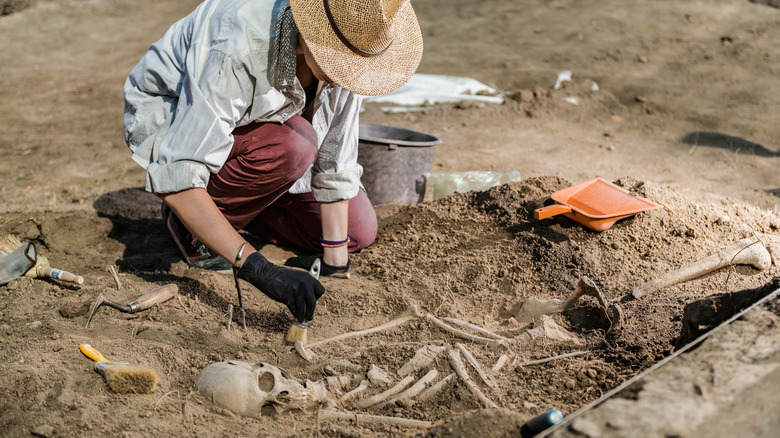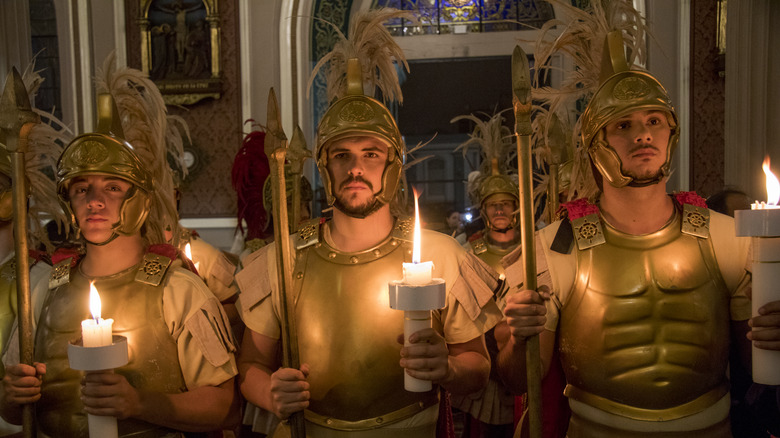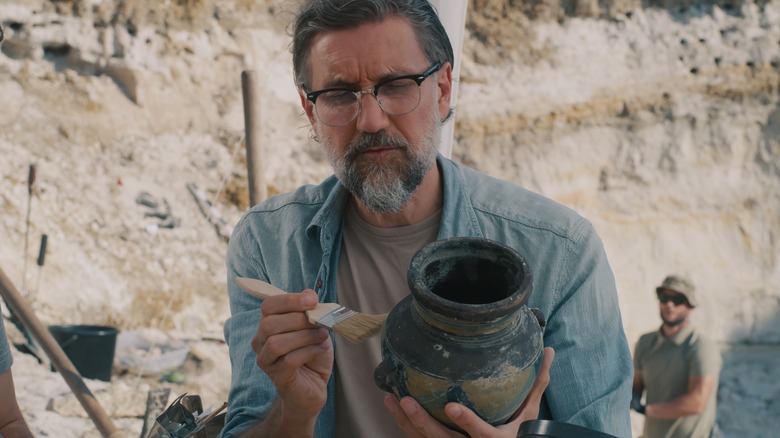The Unsolved Mystery Of The Lovers Of Modena
In 2009, when two skeletal remains were found holding hands in Italy, they were nicknamed "The Lovers of Modena," but their cause of death and burial remains a mystery. However, new revelations about the deceased persons have altered the way researchers have gone about studying the ancient grave. That is that the two corpses have both been identified as males by using a new technique involving the study of protein on tooth enamel, according to BBC.
The new findings bring into question all sorts of ways the ancient Romans tended to their dead. There have been examples in history before of people laying hand-in-hand when buried, but according to researcher Federico Lugli (per The Guardian), "There are currently no examples of this," referring to the skeletons being of the same gender. The reason as to why these two were buried together now seems less certain, but that hasn't stopped archaeologists and researchers from speculating on the matter.
Kin, Comrades, or Still Lovers?
When it was discovered that the genders of the Lovers of Modena were both males, this led to a lot of controversy and discussion on what the relation between the two might be. Some have proposed that they were in fact lovers, and this is an example of a homosexual relationship in ancient Rome that challenges our perceived notions involving their culture and attitudes toward non-heterosexual love. However, other researchers believe that it is possible that they were related by blood — perhaps even siblings or close cousins — or that they were soldiers who died together on the battlefield.
Researchers examined some of the bodies buried near the infamous skeletons and what they found was interesting, to say the least. According to The Guardian, most of the dead had faced physical trauma when uncovered, which led some experts to believe that the gravesite was for people who died in combat. Maybe then, the Lovers of Modena should actually be called "The Brothers in Arms," in life and in death.
New Questions for Historians
Though the cause of death may never be known, it is important to note that researchers are still looking heavily into the case. It may be more unlikely that the pair were actually lovers, for the people who buried the bodies were probably early Christians who didn't condone homosexual love, but no cause can be ruled out, as NBC says. However, it is nonetheless interesting that this is the only known situation where two people of the same gender were found holding hands at a gravesite.
But whatever the relationship between the Lovers of Modena may have been, this newfound evidence has made the archaeological and historical communities ponder how societies may have functioned in the past, which makes future studies even more thrilling. Perhaps no one will ever know why the two corpses were buried hand-in-hand, but only by asking new questions, and keeping an open mind can the puzzle be pieced together.


